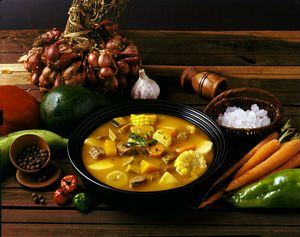
- Get to Know
- About Dominican Republic
- What to see
- What to do
- Hotels
- Santo Domingo
- Boca Chica
- South coast
- Bani
- Azua de Compostela
- Barahona
- Pedernales
- Inland Region
- Santiago de los caballeros
- Jarabacoa
- Concepción de la Vega
- Constanza
- San Francisco de Macorís
- North Coast
- MonteCristi
- Puerto Plata
- S. F. de Puerto Plata
- Sosúa
- Cabarete
- Nagua
More Offers on:Touristic Information:- Dominican Republic
- Santo Domingo
- San Pedro de Macorís
- Juan Dolio
- La Romana
- Higüey
- Punta Cana
- Playa Bávaro
- Samaná
- Hato Mayor
- Bani
- Azua
- San Cristóbal
- Barahona
- Pedernales
- Bahoruco
- San Juan de la Maguana
- Independencia
- Montecristi
- Puerto Plata
- Sosúa
- Cabarete
- Río San Juan
- Nagua
- Santiago
- Jarabacoa
- La Vega
- Constanza
- Cotuí
- Bonao
Basic Information:- Prepare your travel
- How to get
- Means of Transport
- Gastronomy
- What to See
- Beaches
- Museums
- Natural Parks
- Zoos & Aquariums
- What to do
Others:Cuisine in Dominican Republic
Discover the most typical dishes and drinks of the country and enjoy the Dominican cuisine by excellence.
The Dominican cuisine is the fruit of the fascinating mix of Spanish, Taíno and African products. This has gave birth to a great variety of creole dishes, meaning, a cuisine with a European origin developed in America to which are added African influences.
In the country, each region counts with a more customary dishes than others. However, the majority of the foods keep in common the using of some specific ingredients like white rice, the beans, the green beans, the cocoa, the yucca, the chili, the sweet potato, the banana, the avocado or the bananas among many others.
Something you must know about the Dominican customs is that breakfast as well as lunch are strong dishes, while dinners tend to be lighter.
Hereafter you will find some of the dishes you cannot miss:
- The sancocho: derived from the Spanish stew, this dish vary depending on the region you are visiting. It is a soup in which you put a selection of meats and vegetables. It can be accompanied by rice, avocado, spicy sauce or salad.
- The Mangú: destined mainly for breakfast, it is a green banana purée and can be accompanied by many elements. It is very common to have it served it in the hotels for breakfast.
- The casabe: it can be tried in creole food restaurants and it the substitute of bread. It is a cake elaborated with yucca flour, following the recipe of the old Taínos and has a high level of vegetal fiber and very few fat.
- Rice: is the basic ingredient for a large number of creole dishes. In addition to its function as an accompaniment in the majority of stews in the island, outstands the Locrio, which is cooked from fishes, meats and seafoods; the Moro cooked with legume and vegetables; the Aspao, which is thicker, and made with calf, chick and fish, but not all stewed, which gives it density. Last the Chofan, the chinese rice which has become very popular among Dominicans.
- Another characteristic dish is the tostones, green banana strips which are fried and squashed in oil, giving the impression of being fries. It is very common in everyday’s cuisine of every Dominican family and constitutes an usual side dish in the majority of restaurants.
- Chicken is another of the star ingredients in the Dominican cuisine, specially on its fried and seasoned with oregano version. In many occasions they are accompanied by tostones or fries. Equally, the yaniqueques are cakes made of wheat flour which are fried in oil, as if they were creps and are usually filled with cheese or egg. They can be found anywhere.
There are also very popular the salads in which you combine vegetables and fruits typical from the country, giving original tastes to these dishes.
The stewed kid is one of the most common dishes in the Dominican Republic; just as the fish cooked with coconut, a very common stew especially in the coast areas.
- For the lobster lovers, the Dominican Republic offers very varied dishes in which the lobster is one of the main ingredients, since there are plenty of it in the coast area.
Among the desserts:
- One of the most typical desserts in the Dominican Republic and reserved especially for the Holy Week season are the Sweet Beans, a dish made by beans cream with milk, raisins and sugar. It also stands out the Coconut Sweet, the Orange with milk sweet or the Majaretes, a light cream elaborated with grated earn of corn, coconut milk, vanilla, sugar and ground cinnamon.
Dominican drinks:
- Among the alcoholic drinks stand out the rum, softer than the European and with a characteristic flavor that makes it worth the try, and a proper drink made with herbs mixed with rum and another liquor which is known as Mamá Juana.
- Regarding the non alcoholic, the Dominican coffee, among which you can choose up to 25 different varieties, is intense because of the way it is prepared, with a strainer; is offered all day long and is drunk black. The known in Spain as ‘cortado’ is known there as ‘medio pollo’.
Of course the juices and the milkshakes, which are mixed and combined with the exotic fruits of the country. Both drinks are part of everyday life, being found in little stocks on the streets, the highway, etc. in addition to cafeterias or specialised places. On this line you will also find buttermilk, made of milk, ice, sugar, cinnamon and vanilla
The custom of having these drinks is partly motivated for the bad quality and the lack of potable water in many places in the country; so these become wonderful options to quench the thirst and enjoy the food from the Dominican Republic.
Hotels
Book now your Hotel or Apartment:
Flight Offers:
Compare flight offers and book in advance to save some money.
Car Rental
Find the largest offer in car rental for your holidays:
Copyright www.VisitDominicanRepublic.org © - All rights reserved.




